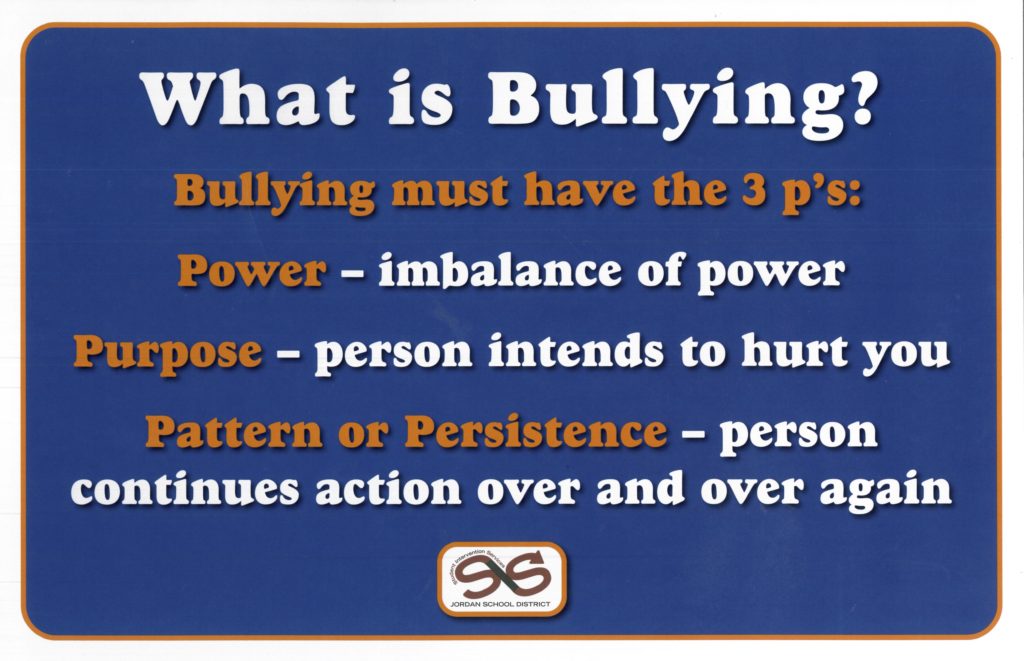What is Bullying?
Bullying must have the 3 P’s to be considered bullying:
- Power: imbalance of power
- Purpose: person intends to hurt you
- Pattern or Persistence: person continues action over and over again
3 Types of Bullying:
- Physical (hitting, shoving, grabbing, kicking, spitting, tripping, punching, stealing, destroying or hiding someone’s belongings)
- Verbal (threats, lies, rumors, racial comments, teasing, name-calling)
- Social (refusing to talk to someone, telling others not to be someone’s friend, gossiping, excluding)
Bullying is NOT a normal childhood activity, it is NOT a “rite of passage”, and it is NOT the target’s fault.
What is the Difference between Bullying and Normal Peer Conflict/Mean Behavior?
| Normal Peer Conflict/Mean Behavior | Bullying |
|
|
Warning Signs that Your Child may be the Victim of Bullies:
- Frequently teased, ridiculed, threatened
- Has a derogatory nickname
- Unexplained bruises or injuries
- Has belongings taken or damaged
- Few or no close friends
- Less assertive
- Lacks the skills to respond to teasing
- Appears weak or physically dominated
- Frequently socially isolated
- Tries to stay close to a teacher or other adult at recess
For more information on Jordan District's policies for the discipline related to bullying, see:

